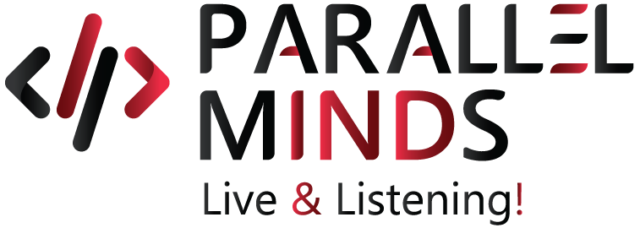From Data Chaos to a Unified Manufacturing Data Landscape: The Microsoft Fabric Advantage
Table of Contents
Helping you find our way through the fog of these inconsistencies and anarchic ecosystems is Microsoft Fabric, a unified analytics platform that is designed to resolve the data chaos that’s keeping us from agile, accurate, and tech-savvy business decisions.
In this piece, I discuss how Microsoft Fabric cuts through the noise in the data analytics journey and transforms raw data into actionable insights, all from the perspective of a leader doing business in the data-driven era!
The Data Chaos Predicament: A Manufacturing Executive’s Modern Conundrum
In the manufacturing industry, while data is an undeniable source of potentially game-changing insights and forecasts, it is also a persistent source of trouble. With valuable information stored across the board, from internal repositories and cloud platforms to legacy databases and third-party storage apps, the challenge is no longer the lack of crucial data but an unmanageable overload of it!
I lay out a short list of pain points and scenarios that you’ll all agree are significant contributors to this problem of data disarray.
Data Silos: The Isolation Challenge
Your CRM systems hold onto your sales data, your analytics platform stores your marketing data, your financial data can be found in your ERP system, and your departmental storage folders hold the operational data of your business processes.
With your entire organizational data stored in isolated and disconnected sets, it is impossible to set up a holistic review of your manufacturing business and arrive at well-informed decisions based on a comprehensive analysis of every bit of relevant information.
Tool Overload: The Integration Headache
In the quest to manage this fragmented data, and to squeeze every insight dry from all available sources, you’ve probably lined up a collection of tools ranging from visualization platforms to data warehousing solutions. Yet, all you’re left with is a balancing act where your IT team spends all its effort and time deciphering complex workflows and overcoming integration hurdles in a bid to keep your manufacturing and marketing processes running smoothly.
Data Inconsistency: An Unavoidable Fallout
With data strewn across multiple sources and storage platforms, there are bound to be inconsistencies in the form of scattered formats, missing values, and errors. This cuts down the dependability factor to such an extent that you cannot trust your own data to make accurate decisions anymore.
Of course, consolidating these vast amounts of data is a resource-draining effort too.
Collaborative Hurdles: Isolation and Incompatibility
Strewn data and the incompatibility of tools that manage them prevent teams from effective collaboration, even when their collective effort is crucial for proactive decisions. Without a cohesive data structure, it becomes difficult to access and share critical information, and the results are mismatched, duplicated and delayed efforts, missed market opportunities, and a redundant decision-making process.
Adverse Impact on Business
Neglected Insights
The disarray in data buries key patterns and valuable insights and denies manufacturing executives the opportunity to spot emerging trends, find avenues to streamline operations, and zero in on fresh and promising opportunities in the market.
Flawed Decisions
Accessing partial data or basing decisions on inaccurate data leads to pronounced errors in decision-making that can snowball into serious repercussions for product development, marketing campaigns, and financial forecasts.
Escalated Expenditures
In a sector where agility and a proactive approach are of prime importance, data chaos impedes your ability to relay swift responses to tackle market changes and challenges and adversely impacts your agility quotient.
Business Handicap
In the presence of scattered and inaccurate data, it becomes vital to spend resources to consolidate, clean, and integrate all this information. This is a resource-draining exercise that eats into your organizational budget and limits your ability to invest in innovation and growth.
Microsoft Fabric Advantages for a Manufacturing Business
You will appreciate how what Microsoft Fabric brings to the table is more of a paradigm shift than just the addition of a new tool to resolve data chaos and command center hurdles. With streamlined, end-to-end solutions that systematically dismantle data silos, functions like management, analysis, and value derivation from your data assets has never been easier.
Unified Analytics Framework
Fabric presents an integrated platform that unifies all essential data analytics tools ranging from data integration, warehousing, and engineering to real-time analytics, data science, and reporting. This cohesive framework enables manufacturing teams to eliminate the added complexity of juggling multiple tools and platforms.
Your team can now reduce operational overhead with a simpler, more streamlined tech infrastructure.
Integrated Data Ingestion
Fabric connects effortlessly with a diverse array of data sources that include onsite databases, cloud storage platforms such as Azure Data Lake Storage, and market-leading SaaS apps such as Dynamics 365 and Salesforce. Your team can schedule these data ingestions in batches or even stream in real-time, ensuring that your analytics are always based on synchronized and up-to-date information.
Hassle-Free Data Transformation
The platform’s data engineering tools are built to accommodate the easy cleaning, transformation, and enrichment of your data. Fabric puts visual pipelines and pre-built transformations to work so your team, even if they do not possess extensive coding skills, can quickly and efficiently prepare for data analysis.
Dynamic Analytics Engine
At the heart of the platform’s extraordinary build is a dynamic analytics engine that gives your team the power to execute a wide range of functions from running ad-hoc queries and streamlining supply chains to forecasting market trends and generating customer-specific insights. This enables Fabric to deliver key highlights in line with your team’s queries.
Seamless Collaboration
The teams and departments in your manufacturing business can finally put an end to the problems that come with data silos and enjoy the benefits of seamless collaboration. Fabric facilitates, even prioritizes, collaborative team efforts.
Now, people across your organization can work together on data projects, share insights, help with coding, and generate visual insights, all in real-time. Cross-functional collaboration is greatly enhanced and fabric ensures that everyone is on the same page, at all times.
Accelerated Insight Generation
Fabric integrates critical data tools and processes, placing them on a unified platform to substantially cut down the time required to transform raw data into useful, actionable insights. This gives manufacturers access to quick, consolidated, and accurate insights that help them make informed decisions to stay ahead of the curve in a competitive market.
Optimized Data Quality and Governance
Fabric boasts of inbuilt tools and features to run data quality and governance checks. This ensures the highest accuracy, dependability, and compliance parameters in your manufacturing data. Executives can now trust the data and insights that come their way, which in turn enables them to make confident business decisions.
Improved Efficiency, Enhanced Creativity
Fabric has an inspiring lineup of features ranging from an intuitive interface to a wide variety of pre-designed templates that add value to the platform and enable teams to work more effectively in an environment that encourages originality and adds a creative quotient to otherwise mundane tasks. While the platform addresses technical complexities, users have a free hand to innovate and explore.
My Closing Statement for Microsoft Fabric!
If anything I’ve mentioned above makes it look like I’m biased towards Microsoft Fabric, it’s because I am! And the reasons are out there for all to take note of and put to the test. Proving itself as a strategic investment and not just another tool in the box, it integrates your wide array of analytic tools, enhances resource allocation, and streamlines maintenance.
By accelerating the generation of actionable insights, Fabric helps your business save considerable resources in terms of time and money. So, if empowering your team’s decision-making abilities and driving your business forward in a data-driven environment are your goals, you just can’t go wrong with this unified analytics platform.
Share:
More Posts

Value Stream Mapping – Current and Future States
If you’ve ever witnessed a brilliant idea with the potential to develop into a successful

The Digital Evolution of a Lean Manufacturing Ecosystem: The Turnaround from Waste to Profit
As leaders in the tech space, we owe it to our respective industries to revolutionize


